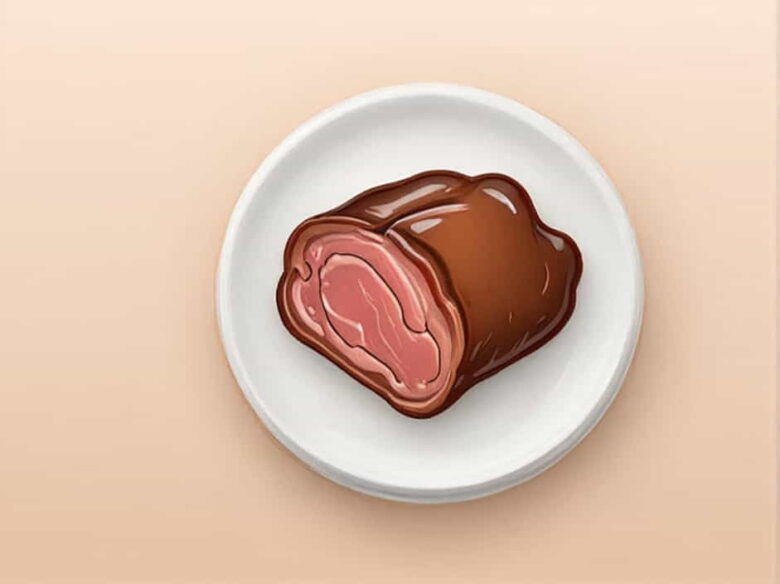Roast beef is a classic dish loved by many for its rich flavor and tender texture. When cooked properly, it can be melt-in-the-mouth tender, leaving a lasting impression on anyone who tries it. Achieving the perfect roast beef requires careful selection of the cut, seasoning, and cooking techniques. Whether you’re preparing a Sunday roast or hosting a special dinner, this guide will help you cook roast beef that is juicy, flavorful, and incredibly tender.
Choosing the Right Cut of Beef
Best Cuts for Roast Beef
The first step in cooking melt-in-the-mouth roast beef is choosing the right cut. Not all cuts of beef are created equal, and some are better suited for slow roasting to achieve that tender, melt-in-your-mouth texture.
- Ribeye Known for its marbling, the ribeye is rich and flavorful. The fat content keeps the meat juicy and tender as it roasts.
- Top Sirloin A leaner cut but still tender when cooked properly. Top sirloin is a great option if you want a slightly healthier roast without sacrificing flavor.
- Tenderloin The most tender cut of beef, tenderloin is ideal for a melt-in-the-mouth roast. It requires minimal cooking time and is perfect for those who prefer a leaner, more delicate texture.
- Prime Rib A classic choice for special occasions, prime rib is known for its tenderness and rich flavor. It’s perfect for creating a melt-in-the-mouth experience when cooked at the right temperature.
The Importance of Marbling
Marbling refers to the fat interspersed within the muscle fibers. The more marbling a cut has, the more tender and flavorful it will be when cooked. Choose a cut that has visible marbling for the best melt-in-the-mouth texture.
Preparing the Beef
Seasoning the Roast
A simple seasoning blend can enhance the natural flavor of the beef without overpowering it. Here’s a basic recipe to get you started:
- Olive oil Helps the seasoning stick and creates a nice crust on the beef.
- Salt and pepper The foundation of any good roast beef seasoning.
- Garlic powder Adds depth and flavor.
- Fresh herbs Rosemary and thyme work wonderfully with beef.
- Mustard (optional) Adds a tangy layer of flavor and helps form a golden crust.
To prepare the beef:
- Pat the roast dry with paper towels to remove excess moisture.
- Rub the entire surface with olive oil.
- Generously season the beef with salt, pepper, garlic powder, and any other spices or herbs of your choice. Make sure to coat all sides for even flavor.
Resting Before Roasting
Allow the seasoned roast beef to rest at room temperature for about 30-60 minutes before cooking. This ensures more even cooking and helps the meat retain moisture.
Cooking the Roast Beef
Oven Roasting: The Key to Tenderness
Roasting is the best method for achieving melt-in-the-mouth roast beef. However, the key is to cook it at a low temperature to ensure the beef remains juicy and tender. Heres a step-by-step guide to roasting your beef:
-
Preheat the Oven: Preheat your oven to 225°F (107°C) for a low and slow roast, or 375°F (190°C) for a faster cooking time. The lower temperature will give you a more tender roast, while the higher temperature will result in a quicker cook but may not be as tender.
-
Searing the Beef: Before placing your roast in the oven, sear it in a hot skillet on all sides. Heat a tablespoon of oil over medium-high heat and brown the roast for 2-3 minutes per side. Searing adds flavor and helps to lock in juices.
-
Roasting the Beef: After searing, transfer the beef to a roasting pan. Insert a meat thermometer into the thickest part of the roast, ensuring it doesn’t touch the bone (if applicable). This will help you monitor the internal temperature as it cooks. Roast at 225°F (107°C) for about 2 to 3 hours, depending on the size of your roast. If youre using a faster method at 375°F (190°C), the roast will cook in approximately 1 to 1.5 hours.
-
Cooking Time and Temperature: The cooking time depends on the size and cut of the beef, as well as your preferred level of doneness. For a medium-rare roast, aim for an internal temperature of 125°F (52°C) before resting. Keep in mind that the roast will continue to cook after being removed from the oven.
-
Basting (Optional): While the roast is cooking, you can baste it with its own juices or a mixture of broth and butter every 30 minutes. This step is optional but can add extra flavor and moisture.
Resting the Beef
After removing the roast from the oven, let it rest for at least 15 to 20 minutes. This allows the juices to redistribute throughout the meat, ensuring it remains moist and flavorful. Resting also makes carving easier, as the meat will hold its shape better.
Carving the Roast Beef
When carving your melt-in-the-mouth roast beef, make sure to cut against the grain. Slicing against the grain helps break up the muscle fibers and results in a more tender piece of meat.
Use a sharp carving knife to cut thin, even slices. If youre serving a crowd, consider slicing the roast beef just before serving to keep it fresh and tender.
Serving Suggestions
Melt-in-the-mouth roast beef can be served in various ways, depending on your preferences and occasion. Here are some serving ideas:
- Classic Roast Beef with Vegetables: Serve your roast beef with traditional sides like mashed potatoes, roasted carrots, and green beans for a comforting and balanced meal.
- Beef Sandwiches: Use thin slices of roast beef in sandwiches or wraps. Add some horseradish sauce, mustard, or caramelized onions for extra flavor.
- Roast Beef Salad: Pair thin slices of roast beef with fresh greens, cherry tomatoes, and a tangy vinaigrette for a lighter option.
- Gravy or Au Jus: For an extra indulgence, serve your roast beef with homemade gravy or au jus sauce made from the pan drippings.
Cooking melt-in-the-mouth roast beef is an art that requires the right cut, proper seasoning, and careful cooking. By following the steps outlined above, you can achieve a roast that is tender, juicy, and packed with flavor. Whether youre preparing a special meal for the family or hosting a dinner party, this recipe will help you create a memorable dish that your guests will rave about. With patience, attention to detail, and the right techniques, you can cook a roast beef that will melt in your mouth every time.



